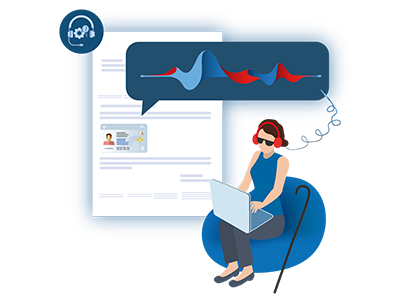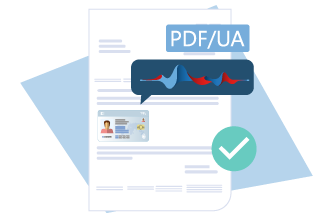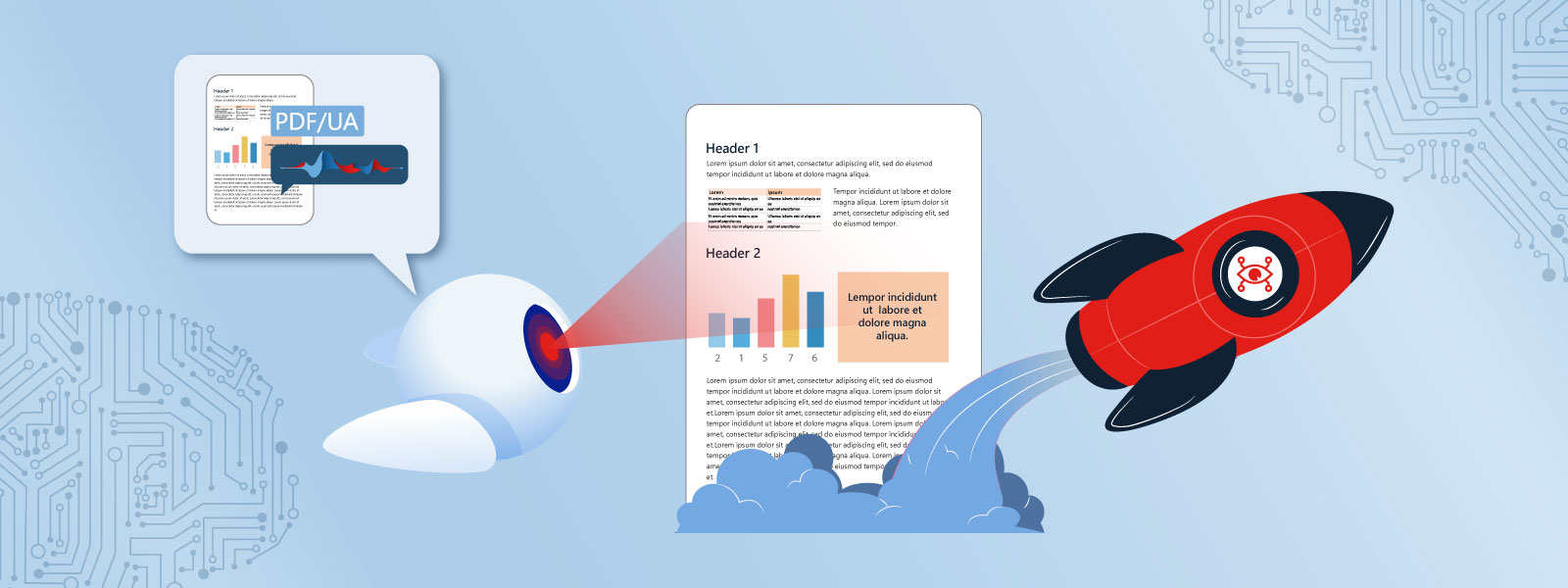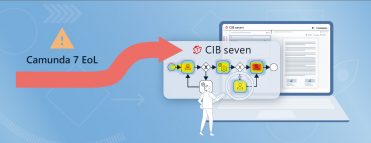We are pleased to announce the official release of CIB ridmi 1.0. With this first version, we are laying the foundation for fully automated, AI-supported layout recognition—a central component of our future document processing platform.
With the AI module CIB ridmi, documents are automatically converted into accessible PDFs – in compliance with the highest international standards. A total of seven machine learning models perform different tasks to ensure a comprehensive understanding of the documents.
Design for All: Accessibility as an obligation and an opportunity
In Germany alone, an estimated 650,000 people live with a severe visual impairment. The World Health Organization (WHO) estimates that there are more than one million visually impaired people.
CIB ridmi was developed in response to the challenge of making accessible documents available to visually impaired people. The goal is to automate manual accessibility processes and promote digital inclusion.

Here are the highlights:
- CIB ridmi automatically identifies recurring headers and footers and reliably separates them from the main content.
- Structural elements such as lists or headings are reliably recognized and correctly classified.
- Image replacement texts are provided using AI language models (LLM).
- Table contents are extracted in a structured manner
Strong indicator of the high quality of PDF/UA documents

The “green” result of the PAC PDF/UA Validator confirms the reliability and high quality of CIB ridmi. Not only does it meet all requirements of the PDF/UA standard and WCAG 2.1, it also guarantees error-free readability by screen readers, thus enabling unrestricted, barrier-free use.
More than just an algorithm: genuine document comprehension
Unlike traditional PDF converters, which usually only perform simple format conversions, CIB ridmi recognizes semantic structures and interprets complex layouts. Footnotes, reading order, and complex formats such as tables or images are correctly assigned.
Automatically generated alternative text descriptions for images
Another important feature is the automatic generation of alternative text for images, which optimizes usability for visually impaired people. The integration of AI OCR technology and scanning apps also makes scanned documents accessible.
Inclusion in compliance with EU directives
In accordance with the Barrier-Free Accessibility Act (BFSG), CIB ridmi meets the legal requirements of EU Directive 2019/882 and is therefore aimed at public administrations, companies, and educational institutions. CIB ridmi thus makes an important contribution to digital inclusion in Europe.

Continuous improvement
CIB ridmi is constantly being improved through continuous localization of data and ongoing testing with visually impaired and blind users to provide a solution that is precisely tailored to their needs.
Conclusion
CIB ridmi enables the largely automated creation of accessible PDFs that meet the requirements of the PDF/UA standard for the first time.
With CIB ridmi, companies can lay the groundwork for making their document processes efficient, modern, and legally compliant. The automated generation of PDF/UA-compliant documents significantly reduces manual effort, increases output quality, and helps organizations reliably meet their accessibility requirements.
CIB ridmi is a crucial technological building block for the digital accessibility of the future.
Learn more about our innovative CIB ridmi technology and contact us to make your documents accessible. Our experts are happy to advise you.
If you already work with CIB software modules, read here how to create accessible documents directly from your template projects.






